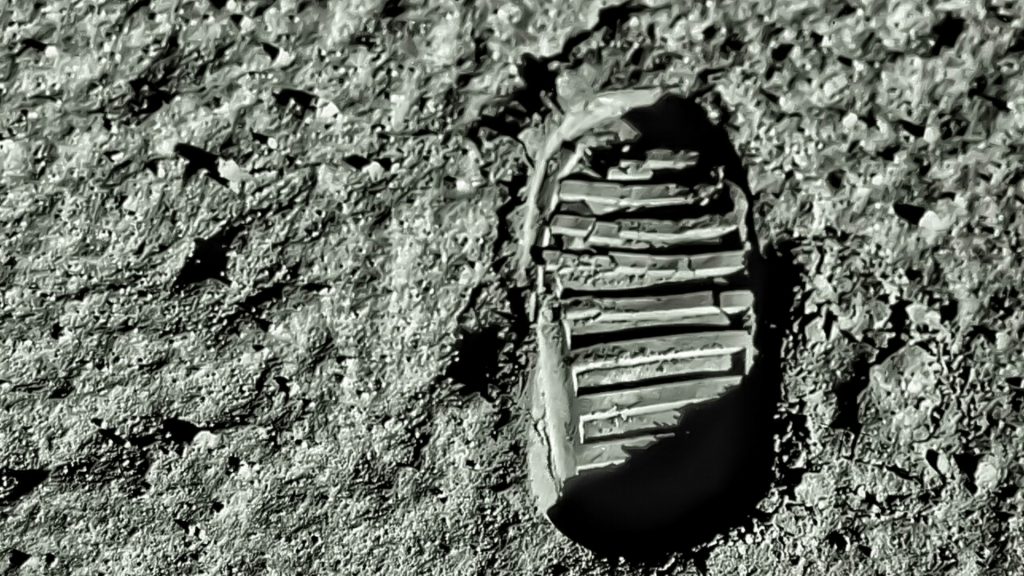
Published July 19, 2019
The full moon rose only a few nights ago. I watched it in rural upstate New York. At the instant the moon appeared, the coyotes that den among rocks on a neighboring farm commenced to howl and sing. Clouds gathered in the darkening southern sky, and the moon climbed up among them—the clouds moving as slowly and imperceptibly as the moon, and coalescing, I noticed, in the shape of a crocodile. The moon’s light cast a nacreous luster, like the light you see on the inside of oyster shells.
Moonrise, the most elegant ceremony in the heavens, is the monthly ancient dream. Here I am, the moon announces, the Expected One.
The coyotes went silent after their first outburst. Fireflies blinked in the humid summer night. Mosquitoes came to us to claim their drop of blood.
Then the clouds cleared away, except for the crocodile’s head. And the full moon, with impassive serenity, ascended, like a great communion wafer, into the cloud crocodile’s jaws.
The moon for eons was a distant, mystic object and a metaphor—a favorite of Shakespeare’s, as in “A Midsummer Night’s Dream” or Cleopatra’s “visiting moon.” It was the force that caused the tides to surge and heave, and the Earth to bulge, like a child’s iridescent soap bubble drawn swiftly through the air; it was the mysterious presence that caused lunatics in psychiatric wards—the “moon mad”—to grow crazier, so that nurses worked double shifts. The moon was Earth’s calendar and measured out months as history cycled along through time. Time is, in part, the moon’s invention. Its enigmatic brilliance and regularity called forth a pagan reverence. The moon was primordial and mysterious—intimate to women’s physiology and their life force. It became a romantic and a sentimental totem, the objective correlative of love.
But after men landed on the moon 50 years ago Saturday, the metaphysics seemed to change. Even the moon’s gender seemed to change. “One small step for man, one giant leap for mankind,” Neil Armstrong said as his space boots pressed down into the powder.
Maybe that moment signaled the old order’s last unambiguous moment of glory. People didn’t think it odd in those days that virtually everyone involved—at Mission Control in Houston, at the launch site near Cape Canaveral, Fla. and where the rocket was built in Huntsville, Ala.—was white, male and American. Life magazine followed the astronauts minutely, at work and at home. The men wore buzz cuts and short-sleeve shirts and drove Mustangs or Corvettes, and their wives had beehive hairdos. The moon program was driven by an immense cultural self-confidence, now vanished.
With the lunar module’s landing half a century ago, the moon that had earlier been poetic and mythic and religious entered into a different dimension altogether—that of the strategic, the military, the geopolitical, the merely technological. Today interest in the moon may be mostly commercial.
The race to the moon started with the Soviets’ orbiting of Sputnik in 1957. Control of space, from which nuclear weapons might be launched, became an urgent new aspect of the Cold War. But John F. Kennedy’s promise to send a man to the moon by the end of the 1960s reasserted the idea of space as a setting for romance and adventure.
In his inaugural address, JFK said we will go anywhere, “pay any price.” Anywhere included the moon. The New Frontier had a new frontier. The space program represented the clean and heroic and virtuous exercise of American wealth and power aiming at the stars. Americans called their rockets Apollo, after the Greek god of such good things as healing and poetry and sun and light and knowledge. The war in Vietnam, pursued simultaneously, was a sort of anti-moonshot—unclean, unheroic and unvirtuous, a descent into humiliation and quagmire.
The Apollo program became expensive (the mathematician Norbert Wiener called it the “moondoggle”). It cost $150 billion in today’s dollars, which was still a good deal less than the price of the war. America would lose in Vietnam—that was clear by the summer of ’69. It was some consolation to have the countervailing victory in space. The moon mission was a magnificent feat of applied science, technology, skill, daring, discipline, ingenuity, focus and political will—the final manifestation, it may be, of an American near-unanimity that had prevailed from Pearl Harbor to Hiroshima and made possible the winning of World War II.
Yet the final achievement sabotaged the old mystique. The Victorian critic Walter Bagehot said of the British monarchy, “We must not let daylight in upon magic.” The result is apt to be banal and debunking—the effect Toto achieved by drawing aside the curtain and revealing the Wizard of Oz as he worked his thunder machine. Armstrong and Buzz Aldrin, at the moment they made history, at the same time brought on a curious bathos. They let daylight in upon the magic of the moon. They walked about for a little while on the pockmarked desolation, a lifeless moonscape that, seen up close on black-and-white TV sets, had none of the formerly imagined charm or mystery. The astronauts might as well have set down in the ugliest patch of Utah.
But no doubt the moon can be improved on. Fifty years on, it is left to entrepreneurial imaginations, like those of Jeff Bezos or Richard Branson, to develop the commercial possibilities of space tourism: luxury hotels in zero gravity, for example. An expensive chocolate will hover above your pillow.
Mr. Morrow is a senior fellow at the Ethics and Public Policy Center.








